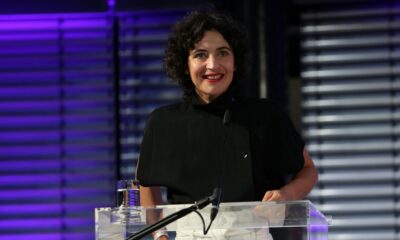Local News
Representatives from The New Israel Fund of Canada come to Winnipeg to speak to Winnipeg audience
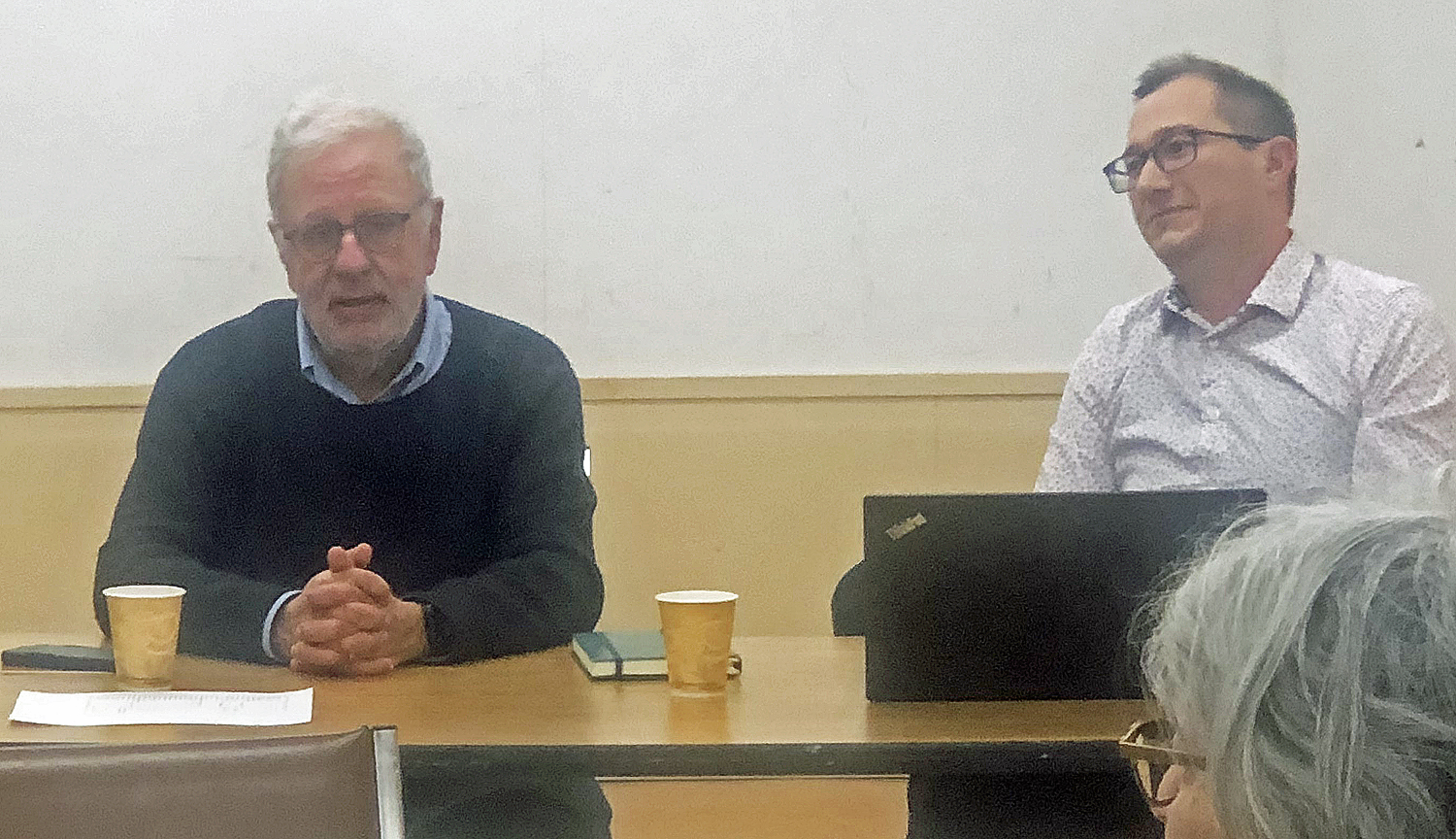
By BERNIE BELLAN In 1977, Menachem Begin became Prime Minister of Israel when his Likud Party was able to form a very narrow coalition with two other parties, thus ending 29 years of dominance by Israel’s Labor Party.
That event set in motion a series of changes to Israel’s political, social, and economic landscapes that are still reverberating to this day.
In reaction to the strongly conservative tilt of Begin’s government – which threatened to undo many of the democratic underpinnings of what Israel’s founders had attempted to achieve when Israel became a state in 1948, a group in California created what was known as the New Israel Fund. According to Wikipedia, “The New Israel Fund was established in 1979 in California and is credited with seed-funding ‘almost every significant cause-related progressive NGO in Israel’. Since its inception the fund has provided over US$250 million to more than 900 organizations. NIF states that while its position is that ‘Israel is and must be a Jewish and democratic state’ it says it was among the first organizations to see that civil, human and economic rights for Israeli Arabs is an issue crucial to the long-term survival of the state.’ “
In 1986, The New Israel Fund of Canada was established as a separate entity, with full charitable status in Canada. Since that time, “NIFC has contributed over $10 million to more than 100 organizations in Israel that fight for socio-economic equality, religious freedom, civil and human rights, shared society and anti-racism, Palestinian citizens, and democracy itself,” according to information taken from the NIFC website.
On Wednesday, December 11, two representatives of the New Israel Fund of Canada who were in Winnipeg spoke to a small group of individuals who braved a bitterly cold night to attend an information session held in the basement of Temple Shalom.
Those two individuals were: Michael Mitchell, a former Winnipegger and a longtime member of the board of NIFC; and Ben Murane, the executive director of NIFC. It was the first ever visit for Murane to Winnipeg and he said that one of the reasons he came here was to help make the work that NIFC has been doing in Israel more widely known to Winnipeggers.
Michael Mitchell introduced himself to the audience, saying that “the person who introduced me to the The New Israel Fund was (the late) Vivian Silver” (who, most readers are no doubt aware, was killed in the October 7 massacre).
Mitchell explained that the The New Israel Fund started “in the 1980s in a very small way, funding certain groups as the problems in Israeli society grew more severe.”
The New Israel Fund of Canada adheres very closely to the rules set out by the CRA for Canadian charities, he said. “We have agents in Israel supervising our projects.”
“NIF in Israel has an international board,” Mitchell noted, including Palestinians and representatives from NIF from other countries.
“NIF has money; they’re nimble, they’re quick,” Mitchell said, “to take nascent Israeli organizations and bring them along.”
NIF “has become much more sophisticated these past five years,” he suggested.
He cited as an example of how effective NIF has been in advancing the work of various Israeli peace groups the drastic decline in violence within Israel itself this past year between Jews and Palestinians, as opposed to what followed in the immediate aftermath of the October 7 massacre, when communities like Lod were riven by violent clashes between Israeli Jews and Arabs.
“If you’re in the middle of a war then you have to tamp down the violence between Jews and Palestinians,” Mitchell said. And a lot of the reasons for the decline in that kind of violence is attributable to the work done by organizations funded by NIF, he suggested.
Where NIF has achieved particular success, he continued, “is in organizing on the ground if you’re opposed to the messianic tendencies of the current Israeli government.”
“There’s a much bigger audience – both in Israel and abroad, that wants to see progressive goals achieved,” Mitchell argued.
As for where The New Israel Fund of Canada stands, Mitchell noted that “the Canadian Jewish community is going through what the American and British communities went through 15 years ago, which is to stop waiting for mainstream organizations to represent them.” A lot of new groups have been formed, he noted, such as “Women Wage Peace” and “Stand Together,” both of which helped to sponsor the December 11 event.
“Canadian Jews are not more conservative about Israel than American Jews,” Mitchell suggested, referring to the results of a survey of Canadian Jews for which NIFC was one of the sponsors. (For more on this turn to https://jewishpostandnews.ca/wjn/news-from-syria-shouldnt-distract-from-whats-been-going-on-in-gaza/.)
“There are at least 100,000 Canadian Jews who agree with us completely but are quiet because they don’t want to rock the boat.”
Ben Murane followed Mitchell, giving a lengthy presentation during which he fully outlined what the NIF is all about. He began by noting that “I am also making a pilgrimage to the place that made Vivian.”
Murane was just a youngster when Yitzhak Rabin was assassinated in 1995, he said. “A lot of the stuff I had heard about Israel – about how great it was, wasn’t quite true,” he noted.
Referring to the most recent Likud victory that returned Netyanyahu to the prime ministership in 2022, Murane said: “Let’s flash backward – a government got elected by a slim margin and announced a grand vision for rewriting Israel’s democracy. It was the first wave of what became a global populism.
“We (the NIF) started investing more in Israeli democracy projects.”
Two years ago, Murane reminded the audience, “hundreds of thousands of Israelis were on the streets” protesting what was then the Likud government’s attempt at judicial overhaul – which would have severely limited the power of Israel’s Supreme Court to intervene in cases where civil liberties were at stake.
“We (the NIF) were firmly there,” Murane said, helping Israeli civil liberties organizations to fight back at what the government was attempting to do.
Then, with the events set in motion by the October 7 massacre, Murane observed: “We knew what would happen. They (the Likud-led coalition) would use what happened as an excuse to advance the rest of their agenda.”
But, what happened after October 7 was the almost complete disappearance of many of the structures that held together Israeli civil society, Murane suggested.
Families were forced to evacuate from their homes near the Gaza Strip – with no support given by the government. Instead, groups that had sprung up in 2022 in response to the government’s attempted judicial overhaul stepped in to provide basic supports to those families, with food and housing. The NIF provided funding for many of those groups.
Something else soon became apparent after October 7, Murane said. “It was immediately obvious that the government didn’t care about the hostages…They weren’t their people.” (Many of the hostages came from kibbutzim that were strongly socialist in their orientation and not at all supportive of the right wing government coalition.)
In fact, Murane observed, within Israel’s current political atmosphere, the only opposition to the government is coming from “the organized support for the hostages.”
Something else Murane pointed out about the aftermath to October 7 is that “it wasn’t just Jews hurt on October 7.” There were members of other groups taken hostage, including Thai and Filipino workers, also Arab Bedouins.
The NIF has helped to provide support for evacuees ever since October 7, including to joint Jewish-Arab distribution centres that “have provided aid on a daily basis,” Murane noted.
“It is not Jew against Arab,” he said. “It is those who believe in life as opposed to those who believe in death…We will take care of each other. We will be the first to help civil society deliver aid.”
Murane suggested that there are several key components to what the NIF is attempting to do in Israel, including “pushback, partnership and peace.”
By “pushback,” he meant, pushing back at the narrative that the Netanyahu-led coalition has developed, which is that the hostages will not return until Hamas totally accedes to the demands put forward by the Israeli government.
“Freeing the hostages is a political matter,” he suggested. “The hostage families have been saying to Jews in the Diaspora: ‘If you want to support the hostages, then Bibi has to step down.’ “
As for “partnership,” Murane explained that “there are still many Jewish and Palestinian people who will stand together and find common cause.” He referred to groups such as “Omidm B’yachad” (standing together), whose members have been “protecting trucks bringing aid to Gaza” from Israelis who had been trying to stop those trucks from entering Gaza.
“We want to keep that flame of partnership alive,” Murane said.
He noted that on Yom Hazikaron (Remembrance Day in Israel) over “6,000 Jews and Arabs came together in one place to show compassion for one another.”
When it comes to “peace,” Murane pointed to the example of World Central Kitchen (an organization receiving funding from the NIF), which has been providing food to Palestinians in Gaza. Helping that group is “an act of morality showing people around the world Zionists giving support to their neighbours.”
Insofar as the road to peace is concerned, Murane suggested that “there are ways out of this mess.” He noted that the idea for the Abraham Accords, in which Israel signed peace agreements with Bahrain, the United Arab Emirates, Morocco, and Sudan, in 2020, was actually first advanced by an Israeli peace group known as “MITVIM.”
Murane posited that a “reinvigorated Palestinian Authority” is one component that would lead to advancing the peace process, but “of course the Israeli government doesn’t want to hear about that.”
The NIF has been active in supporting many different Israeli peace groups, Murane noted, including “Breaking the Silence,” which is made up of IDF veterans who want to draw attention to what Israel’s occupation of the West Bank is truly like.
“The way out of this mess is not going to come from the government,” Murane suggested. “It’s going to come from civil society.”
Yet, time is short, he said. There will be another election in Israel within the next year or two. “We have two to three years to see who will win the civil war in Israel: the annexationist camp or the pro-democracy camp,” he said.
To that end, the NIF has greatly increased funding for many Israeli human right groups, Murane noted. (In 2023, the NIF provided $19 million in funding to over 234 different organizations in Israel, of which $1 million came from The New Israel Fund of Canada.)
Local News
Newly announced Vivian Silver Centre for Shared Society to further former Winnipegger’s lifelong efforts to foster Jewish-Arab co-operation in Israel
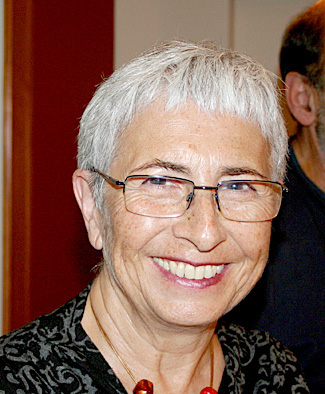
By MYRON LOVE Vivian Silver (oleh Hashalom) devoted her life to working toward dialogue and collaboration between Arabs and Jews in Israel. The culmination of her efforts was the Arab-Jewish Center for Empowerment, Equality, and Cooperation – Negev Institute for Strategies of Peace and Economic Development (AJEEC-NISPED), which she co-founded 25 year ago with her sister peace activist, Dr. Amal Elsana Ahl’jooj.
Tragically, Vivian was of the 1,200 Israeli Jews, Bedouin and foreign farm workers who were slaughtered during the Hamas-led pogrom of October 7, 2023.
Last month, AJEEC-NISPED announced plans to create the Vivian Silver Center for Shared Society in her memory – a new national hub for Jewish-Israeli Arab collaboration and social innovation in Be’er Sheva – backed by an initial $1 million donation from UJA-Federation of New York, along with support from the Meyerhoff Foundation, the Gilbert Foundation, and other philanthropic partners committed to strengthening shared society in Israel.
“It’s a great honor and a beautiful gesture,” comments Vivian’s son, Yonatan Zeigen, “and I hope it will be a central building for civil society, both in the physical sense, that it will become a substantial home for the organization and for other initiatives that will use the spaced and also symbolically, as a beacon for this kind of work in the specific location in the Negev.”
As this writer noted n an article earlier this year in relation to the announcement of the launch of the Vivian Silver Impact Award by the New Israel Fund (NIF) – of which she was a long time board member, and which was developed in conjunction with her sons, Yonatan and Chen), Vivian made aliyah in 1974. She first went to Israel in 1968 – to spend her second year at university abroad at the Hebrew University of Jerusalem, studying psychology and English literature.
In an article she wrote in 2018 in a publication called ”Women Wage Peace,” she related that during her final year at the University of Manitoba, she was among the founders of the Student Zionist Alliance on campus and was invited to its national conference in Montreal. There she met activists in the Habonim youth movement who planned on making aliyah and re-establishing Kibbutz Gezer. The day she wrote her last university exam, she boarded a flight to New York to join the group.
She spent three years in New York, where she became involved in Jewish and Zionist causes, including the launch of the Jewish feminist movement in America.
“It was a life-changing period,” she recalled. “I came to understood that in addition to being a kibbutz member, I was destined to be a social change and peace activist.”
Vivian and her group made aliyah in 1974 and settled on Kibbutz Gezer. In 1981, she established the Department Promoting Gender Equality in the Kibbutz Movement. She moved to Kibbutz Be’eri near the Gaza border in 1990, along with her late husband, Lewis, and their two sons
In 1998, Vivian became the executive director of the Negev Institute for Strategies of Peace and Development in Beer Sheva, an NGO promoting human sustainable development, shared society between Jews and Arabs, and peace in the Middle East. Soon after, she was joined by Amal Elsana Alh’jooj as co-directors of AJEEC-NISPED, winning the 2011 Victor J. Goldberg Peace Prize of the Institute for International Education.
In the article she wrote for “Women Waging Peace,” she noted that “while we later focused on empowerment projects in the Bedouin community in the Negev, initially we worked with Palestinian organizations on joint people-to-people projects. I spent much time in Gaza until the outbreak of the second intifada. We continued working with organizations in the West Bank. I personally know so many Palestinians who yearn for peace no less than we do.”
According to a report in the Israeli newspaper Arutz Sheva, in the November 24th edition, the Vivian Silver Centre – which is expected to open in the spring – will be located within AJEEC-NISPED’s soon-to-open AJEEC House, and will provide a permanent home for programs that promote equality, leadership, and cooperation among Israel’s diverse communities.
“The Vivian Silver Center for Shared Society, within AJEEC’s headquarters, “the Arutz Sheva report noted, “will serve as a regional platform for dozens of Israeli Arab and Jewish social organizations. Through AJEEC’s educational, vocational, and leadership programs, the center will support thousands of young adults each year – offering mentorship, professional training, and opportunities for cross-cultural collaboration.
“These programs,” the report continued, “already reach more than 15,000 participants nationwide, helping young people integrate into higher education and meaningful employment while narrowing social and economic gaps.”
AJEEC House is located in Be’er Sheva’s Science Park, near Ben-Gurion University. The three-storey AJEEC House has been designed to foster cooperation and dialogue. It will host community partnerships, provide shared workspaces for social entrepreneurs, and serve as a hub for initiatives addressing social and economic development across the Negev and beyond.
Readers who may be interested considering a donation can dial into NISPED’s website – – for further information.
Local News
Stanley Schwartz- it’s a long way from Waterloo
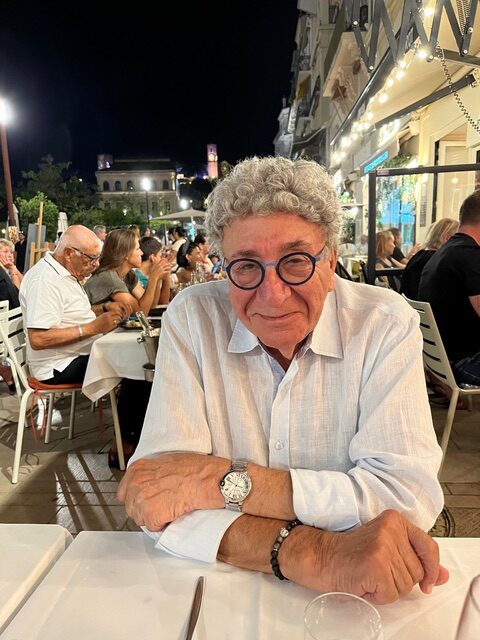
By GERRY POSNER For Stanley Schwartz, it all began on Waterloo Street. For those who remember the 1950s and 60s – take yourself back to the south end of Winnipeg. Waterloo between Corydon and Fleet had enough Jewish families to form its own High Holiday congregation. That is to say, there were a whole bunch of Jewish families there. Not quite McAdam Avenue in the north end – but close enough. One such family was that of Harold and Faye Schwartz, along with their children: Anita, Ruth, and Stanley.
Stanley graduated from Kelvin High School. In fact, he played football for the Kelvin Clipper. In addition, he was a participant in typical Jewish teen activities at the time, particularly AZA. He had a wide network of friends, some of whom remain vital connections to this day. Remember, in those days, there were no cell phones, no internet, and barely the beginnings of TV. So, as a teenage boy, Stanley spent a lot of time with his buddies.
Stanley went on to the University of Manitoba from where he graduated law in 1967. That was Stanley’s first step into a career that lasted close to 50 years. His second big step was his decision to forgo an offer to become a partner in a well known and established law firm in Winnipeg, and instead, go out on his own in a shared space arrangement. The shared space arrangement lasted several years and, during that time, he also opened up an office in Morris, Manitoba. Morris was once home to several Jewish families, but not when Stanley moved there to live.
Along his way to practicing law, Stanley got married – to the former Shirley Hooper, a woman originally from England who had moved to Vancouver and whom Stanley met by chance in Hawaii. They were blessed with two children and now have five grandkids. But the family did not end up in Winnipeg. In what was a huge life changing decision at that time, Stanley and Shirley boldly packed up their belongings and moved to Vancouver. Now, some of the thinking that entered into this move might well have been Shirley’s lack of fondness for the Manitoba winters (even though she had formed close relationships with many people in Winnipeg at that time – relationships she still maintainsto this day). But Stanley was also open to a fresh start in a new place. That decision, looking back on it now in 2025, was a wise one for both Stanley and Shirley Schwartz. For starters, who knew that Vancouver would explode with an immigrant population and with it, a dramatic increase in the value of property, caused in part by non-residents buying up land and buildings in Vancouver? Aside from that, Stanley had a specialty in his practice of law that was a perfect fit for Vancouver’s growing population- family law.
For the entirety of his legal career, Stanley focused on matrimonial law in every aspect, not the least of which was litigation. As a former lawyer myself, let me say that if there is an area of law filled with tension, aggravation, and sadness, it surely must be the field of marriage, children and custody battles, access, division of assets and all that goes with those issues. You often are not just a lawyer, but also a psychologist, father confessor and a lot more. You really have to be able to be able to watch some of the worst in humanity. And you have to be ready to, as they say, “ go for the jugular.”
You may never have to do it, but you have to be ready. Stanley Schwartz was ( nd remains so this day, in my view) on the face of it, not a likely candidate to be thought of as aggressive.That is because he was then and still is now, a friendly guy who does not seem to be one cut out for courtroom battles. But clearly, he was able to be “ rough and tough” when he had to be. When I asked Stanley what advice he would give to somebody wanting to employ him in a family law situation, he was quite frank. His immediate response to these kinds of clients was: “If you want a war, the winners will be two people -the two lawyers. The losers will be your children ( f there are kids in the picture.”)
Stanley might still have been at it, but he had medical issues relating to his back over a period of many years. He has had three spinal surgeries, and none of them has really worked satisfactorily. Standing for periods of time was hard for Stanley. He says he knew it was time to give up his practice of law when one day in court six or seven years ago, while he was in argument, he leaned against the dais and the judge told him that it was ok for him to sit down and argue. That episode confirmed what he had thought for a while: time to call it a day and a career. So with two metal rods in his back and pain in his legs, Stanley retired.
Though no longer involved in the legal world, Stanley has managed, very easily he would add, to settle into his non working life with as much travel as he and Shirley are able to do. That travel includes trips back to Winnipeg, also Winnipeg Beach – where he spent much of his youth. His visits also include time with his sister, Anita Ruth Neville, a name not exactly unknown to Manitobans given her role as the 26th Lieutenant Governor for the Province of Manitoba. And, with one daughter in Toronto, Shirley and Stanley also make regular stops in that city to see his family there.
Not that long ago, Stanley stepped into the world of octogenarians. He is quick to say that getting old is not for sissies, but at the same time, he is one to embrace what each phase of his life has brought.
Local News
Farah Perelmuter – a former Winnipegger in the spotlight
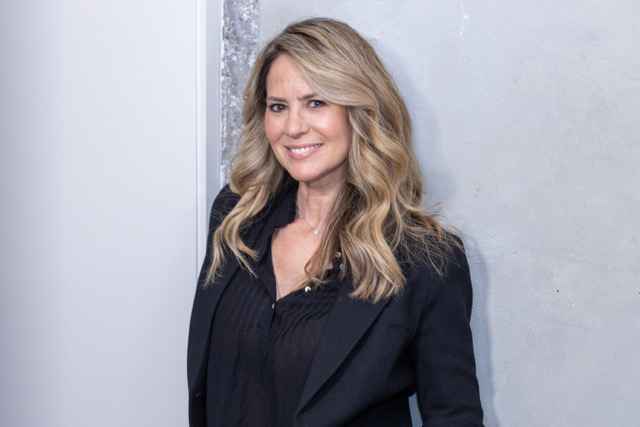
By GERRY POSNER From the north end of Winnipeg, Garden City to be exact, comes yet another Winnipeg woman who has almost singlehandedly built a prosperous business in Toronto – almost out of the blue. And who is this Winnipeg woman? None other than Farah Perelmuter, bornFarah Vinsky, the oldest of Toby and Irv Vinsky’s three daughters.
Farah attended Talmud Torah and Joseph Wolinsky Collegiate, also spent a year at the University of Winnipeg Collegiate. Upon graduation from high school, Farah took a gap year in Toronto working in the modelling industry. During that year, she had a chance to visit Western University in London, Ontario. That visit inspired her to apply there and, after one year at the University of Winnipeg, she was off to Western. Interestingly, not that long ago, Farah served on the Western Alumni Board – a role she filled for six years.
As a teenager in Winnipeg, Farah indicated that she had an entrepreneurial gene, as evidenced by her creating what was a “ self development “ program for teenage girls. When she started that program, Farah was all of 16 and was already working in her spare time in a modelling agency. When she came to Toronto after her graduation from university, she began working at a marketing agency, but the desire to be her own boss was so strong that, in 1995, Farah, along with her husband, Martin Perelmuter, started a business known as “ Speakers Spotlight.”
The business’s purpose was to bring prominent speakers to address audiences at locations all over the world. The couple initiated the business right from the spare bedroom in their apartment – with only one phone and one computer. Worse than that, Farah and her husband had no clients, no experience, no staff and, of course – no money. What they had was a clear vision. That vision was to put the right speaker in front of the right audience and, if they could do that, the impact would be significant and lasting. They also had so little business experience that they tried out different ways of doing things in their business and were not afraid to be innovative. That willingness to create and change likely propelled them speedily into the forefront in their field. As proof of their standing in the industry, Farah and Martin were selected twice as Entrepreneurs of the Year by Ernst and Young.
From that modest beginning emerged what is today called “ Speakers Spotlight,” a business that has grown into one of the world’s largest and indeed most respected speakers’ agencies. Farah and Martin have developed a team of people working for and with them (now up to 35 people, who work both in and out of the office) and, as well, they have created an incredible roster of extraordinary speakers. Their list of speakers includes people with deep experience in their respective fields. That combination of prominent speakers and a loyal, dedicated group of people putting the speakers on to platforms has allowed “Speakers Spotlight” to raise the bar of professional service and integrity within the industry. Would you believe 40,000 speaking engagements over 50 countries are now part of the history of a business that started in Farah’s spare bedroom? Just the list of names who have participated with Speakers Spotlight is staggering. Google Speakers Spotlight and I promise you will be overwhelmed, both by the quantity and quality.
Along the way, the company has received numerous awards and accolades. Most importantly, they have, through the various people that have been involved as speakers, helped to plant the seeds for people in the audience to make changes, alter plans and to inspire them to go forward. Sometimes, it’s as little as hearing the right person tell a story that can affect one person and from there, big things often develop. For Farah, that is what keeps her excited about her business.
In 2017, the couple started another business related to the first one, called “ The Spotlight Agency.” This company connects celebrity talent with opportunities all over the world. The talent comes from every area of life including the fields of entertainment, sports, food, decor and more. What the Spotlight Agency does is to unite these personalities to a brand of partnerships, with digital and creator content,TV, streaming, podcasts and publishing.
Even with the real success of Farah’s business ventures, what pushes her are her two children, Jade and Cole, both now in their 20s, and forging their own trails. As well, Farah appreciates from whence she came and she looks forward to what lies ahead. She treasures her return trips to Winnipeg to see her parents, relatives and indeed, old friends. So much is Farah Perelmuter a true Winnipgger that she still roots for the Winnipeg Jets, especially when they play the Toronto Maple Leafs. So, let the spotlight shine on Farah Vinsky Perelmuter.




